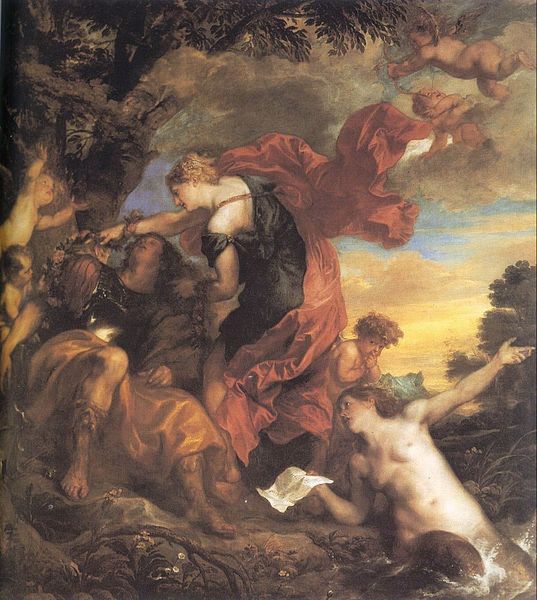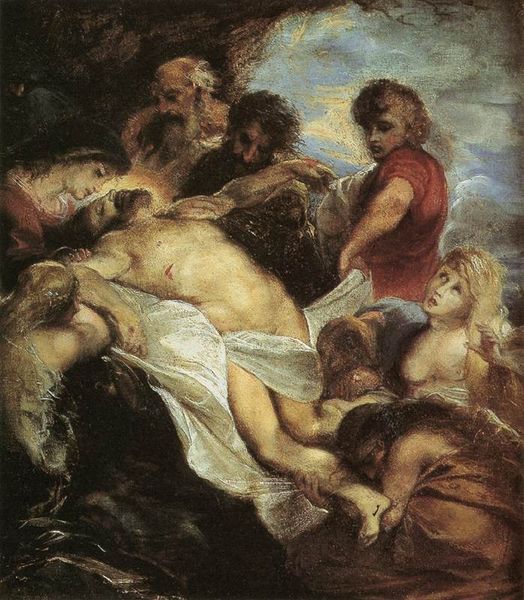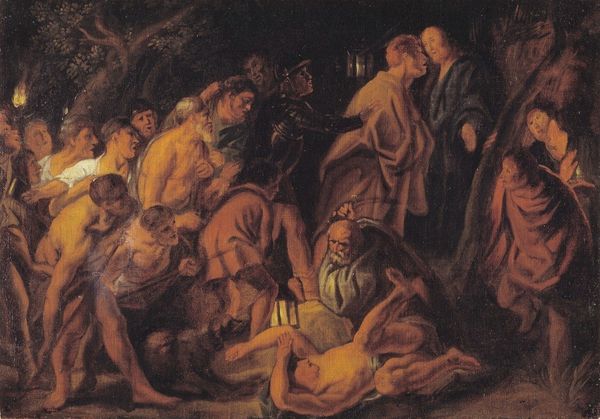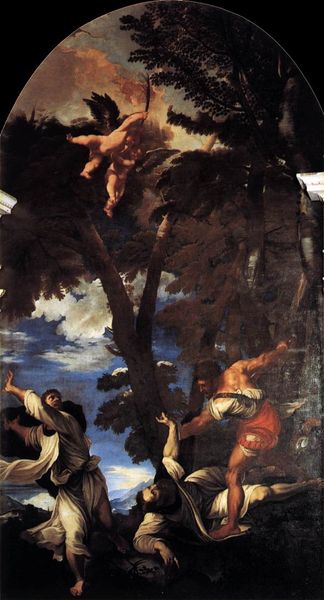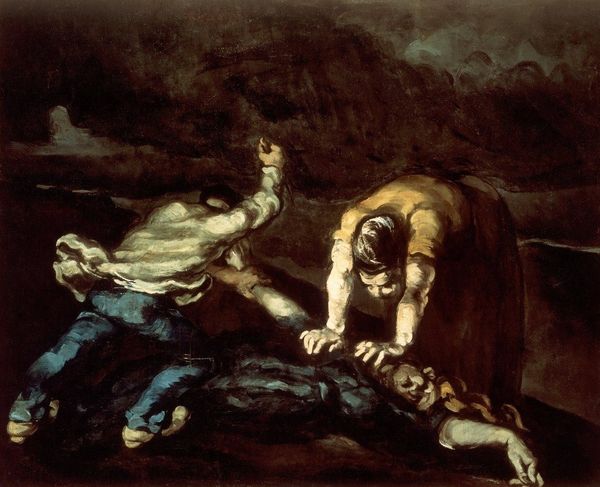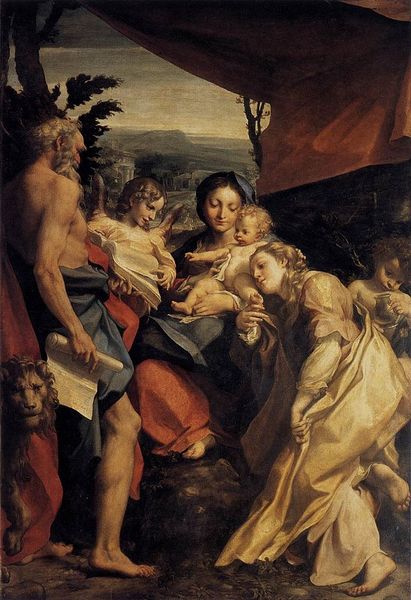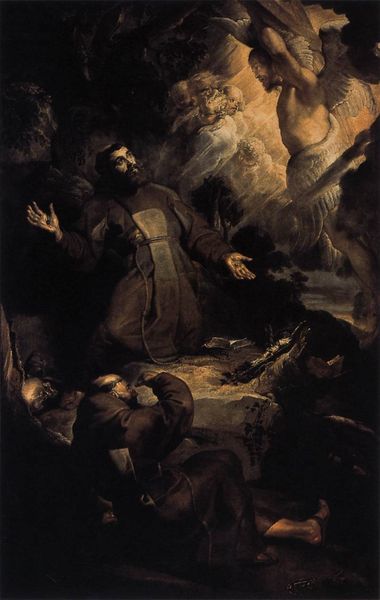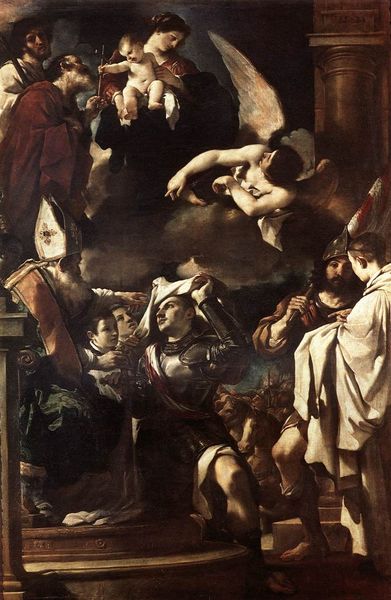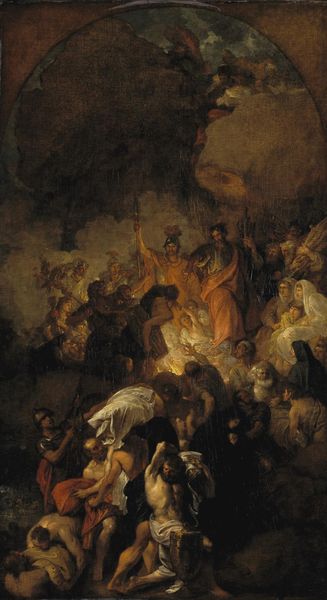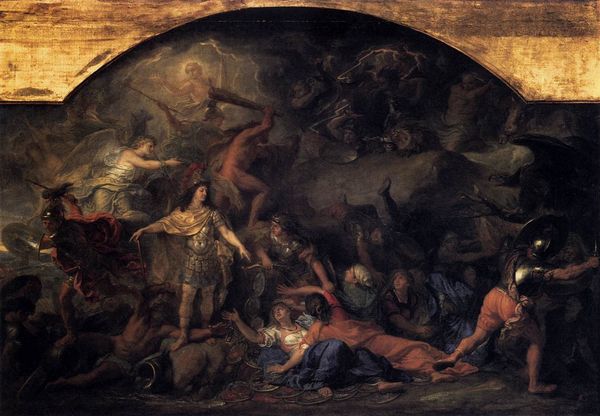
Copyright: Public domain
Curator: Painted in 1870, Paul Cézanne’s canvas, "The Barque of Dante (after Delacroix)," presents a scene of tormented souls adrift on churning waters. Editor: The overwhelming darkness really sets the stage. A deep unease permeates this painting; it's palpable even from here. The color palette is brooding, dominated by murky greens and browns, but the strategically placed splashes of red draw the eye—a symbolic reference perhaps? Curator: It is based on Eugène Delacroix's earlier and more famous treatment of the subject. Both interpret a scene from Dante Alighieri’s "Inferno," specifically Canto VIII. Cézanne’s work captures Dante and Virgil crossing the River Styx, ferried by Phlegyas, as they journey into the depths of Hell. Editor: So much visual symbolism! The figures, writhing and intertwined, evoke a sense of desperate struggle, yet also reveal a certain choreography. There’s also something powerful in its defiance of academic norms. But does the source text add meaning beyond its face value? Curator: Absolutely. "The Barque of Dante" can be read as a commentary on societal and political unrest during the Second Empire in France and reflects on broader themes of injustice, suffering, and humanity's darker impulses. Dante's journey resonates with our own searches for meaning and struggles against adversity. The red tones in the robes serve to point towards blood. Editor: I find it striking how Cézanne transforms Delacroix’s dramatic romanticism into something more… internalized. The choppy brushstrokes, the almost suffocating atmosphere… it’s a psychological exploration of despair, really, rather than just a literal depiction of Hell. The image is full of signifiers of despair that remain long after the work is gone. Curator: And remember the period! This was created amidst social upheavals; France was grappling with defeat and disillusionment. So, perhaps, this isn’t simply an illustration but a reflection of national trauma and anxiety. It might act as commentary about the position of marginalized groups within society. Editor: Food for thought, absolutely. It reminds me how art, even when depicting the fantastical, can be so deeply rooted in real-world anxieties and experiences. And this one is exceptionally effective at eliciting that visceral response. Curator: Indeed. Art allows us to confront challenging truths and imagine new realities—an endless dialectic. Editor: Exactly. A testament to the transformative power of enduring cultural imagery to challenge, to question, and to redefine norms.
Comments
No comments
Be the first to comment and join the conversation on the ultimate creative platform.

